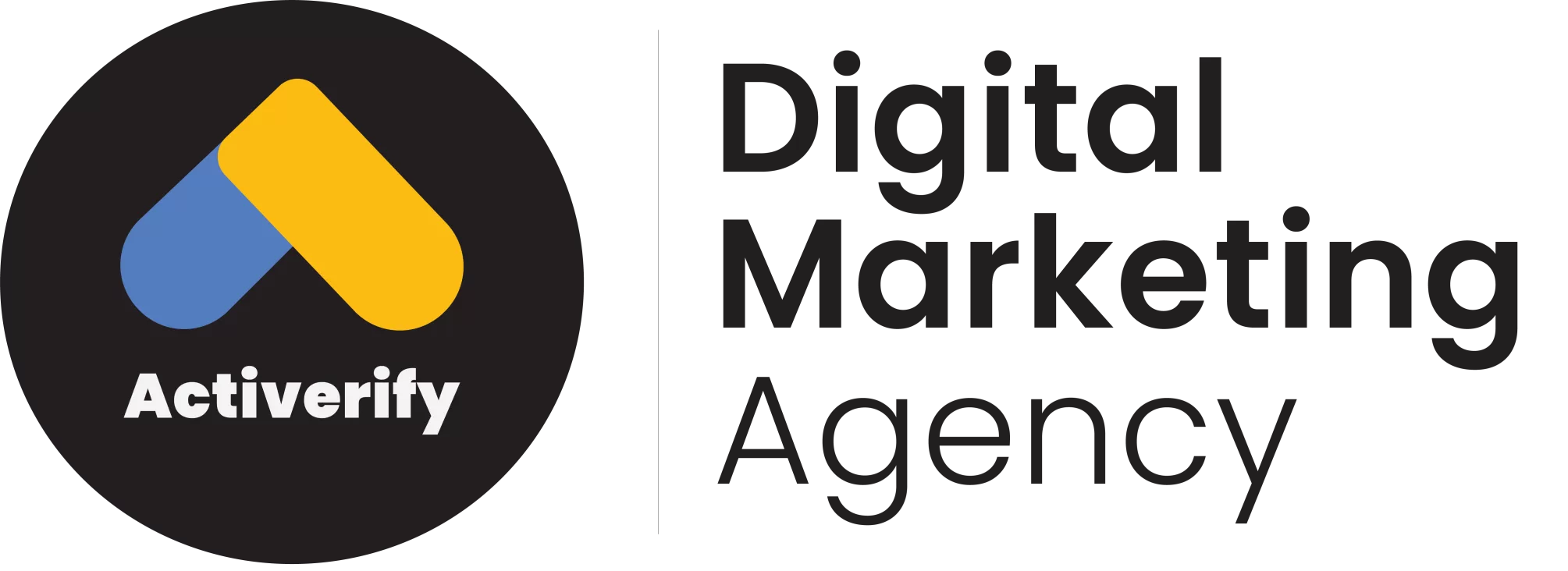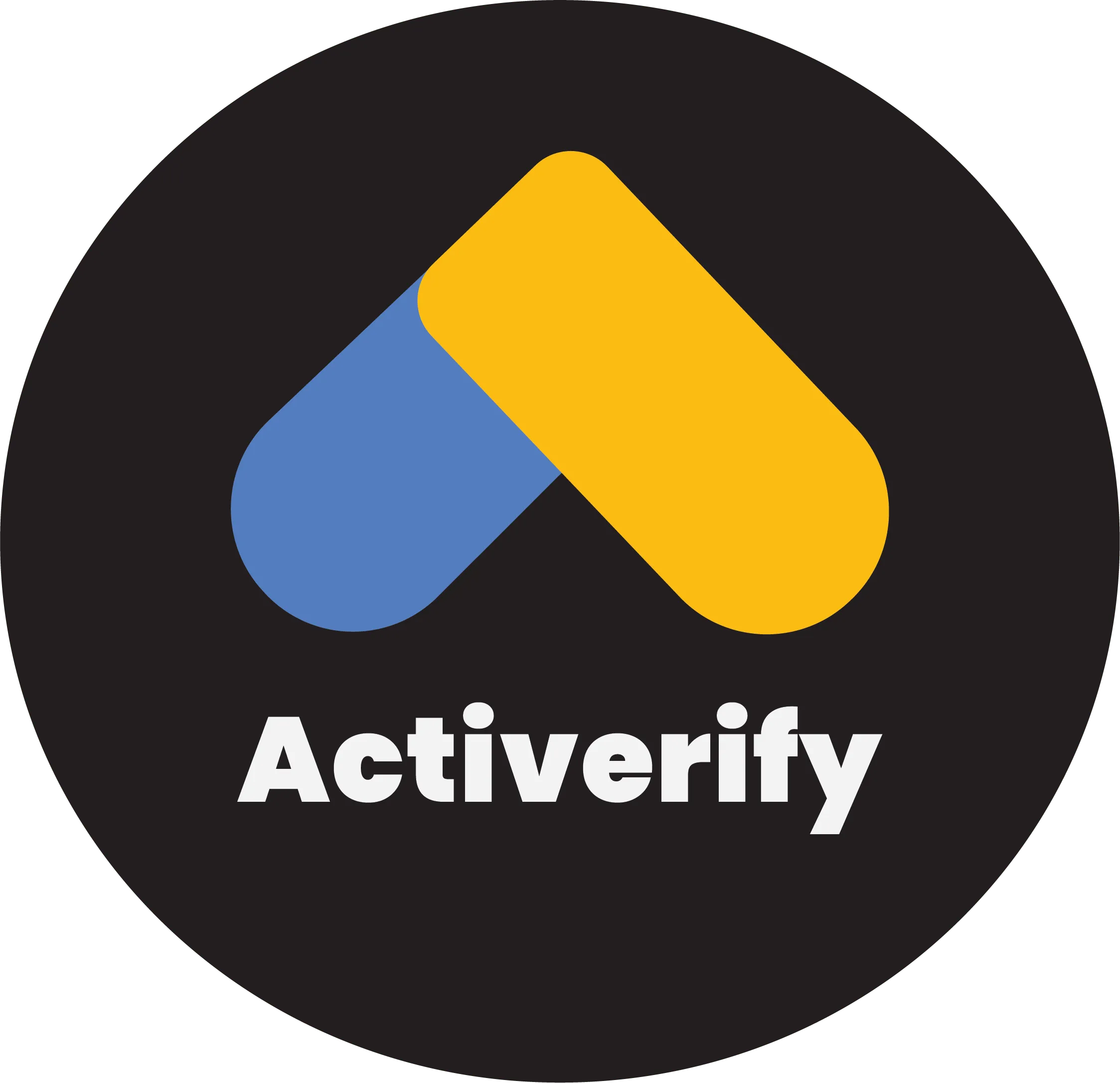With two billion regular monthly users, Facebook is the most popular social media system. However, you’ve had to a great Facebook online marketing strategy if you would like your business to stick out among the 50 million businesses on Facebook!
Facebook advertisements are the cornerstone of several small business’s marketing strategies, but you need to pay attention to the content on your page in addition to your ads. We’re here to provide you with 7-step Facebook’s marketing strategy sure to help your business succeeds!
The steps are as follows:
Now here are all seven steps in detail so you’ll have all the information you need to get started on your Facebook marketing strategy:
1. Set Goals
The very first step in your Facebook online marketing strategy ought to be to set goals.
What email address details are you seeking to achieve from your Facebook online marketing strategy? Are you attempting to get brand recognition, increase web site traffic, gain leads? Once you’ve determined your targets, you can modify your Facebook online marketing strategy accordingly.
There is absolutely no one-size-fits-all Facebook online marketing strategy. Establishing goals is how you ensure that your strategy is catered to your unique needs.
Where do you begin? When setting goals, it’s a great idea to use the SMART strategy. That is, setting goals that are specific, measurable, attainable, relevant, and timely. For example, instead of stating that your goal is increased brand awareness, your goal is to gain 1,000 fans in 90 days. This is a good goal since it is specific, can simply be monitored and assessed, it’s practical, and they have a time element. If you’re looking forward to increasing leads and sales, your goal could be to have 30 leads and a cost per conversion of less than $10 by the end of the month. Setting SMART goals can help you determine if your Facebook marketing strategy is working.
2. Pinpoint Target Audience
Facebook marketing is useless if you aren’t reaching the right people. That’s why getting the right target audience is so important! Whether your target audience consists of grandmas, gamers, or graphic designers, odds are, they’re on Facebook. You just have to know how to find them.
So where do you start? If you have a basic notion of who your market is, you could start building an audience in Facebook Advertisements Manager. You are able to create a custom audience by simply clicking the “Audience” section pictured below.
Next, click on the blue “create audience” button on the left-hand aspect of the display screen and choose “custom audience” on the drop-down list.
When you make a custom audience, Facebook will first ask how you want to generate your audience with a summary of options. The choice you choose depends on the quantity of information you currently have on your market.
The first option on the list is to upload a person file. When you have a summary of information on previous customers, including names, phone numbers, and/or email addresses, Facebook can use that information to generate what is referred to as a lookalike audience. A lookalike audience is an audience made up of Facebook users comparable to your present customers or clients. This is often a great start and can be narrowed down the road if the audience eventually ends up being too big, or you merely want to target certain demographics.
Some other custom audience options include targeting people who have visited your website, people who have previously engaged with your Facebook or Instagram page, and more. These options are great if you already have a lot of engagements and want to turn your supporters into customers, or if you have a great deal of web site traffic and desire to retarget people who see your site without making a purchase. We will dive deeper into retargeting soon.
If you don’t have a customer list, as many startups do not, you can create a custom audience from scuff. To do this, you’ll want to choose Saved Audience instead from the same drop-down menu where your chosen Custom Audience. Now you can complete the concentrating on the information you wish and click “create audience” at the bottom of the windowpane. Once the audience has been preserved, you can use that custom audience in future ad units and tweak it as needed.
While creating your custom audience, pay close attention to the meter on the upper right-hand side that shows you the audience size. Ideally, your audience should fall into the green range on the meter. The red indicates your audience is too specific and the yellow shows your audience is too wide.
Reaching as many folks as you can be audio great, nevertheless, you should always refine your audience to just the most qualified people. A big pond doesn’t necessarily mean you’ll catch bigger fish. In fact, it may make it more difficult to get the right seafood. Analogies apart, you can slim your audience if you believe it might be too big. You can do so by clicking the “Narrow Audience” button as pictured below.
As you can see in the above image, this fairly large audience includes 2,000,000 people. It includes people in the U.S., who are small-business owners OR are interested in social media. If we click on the “Filter Audience” button, we can remove small enterprises from the first section and add it to the new section. This helps it be, therefore, the audience is composed only of small enterprises who are also thinking about social media. Narrowing the audience this way will lower it to 65,000 people.
Alternatively, if your audience is too small, you risk the same people seeing your ads again and again without achieving new people. As you can see in the chart below, Facebook’s songs both “reach” and “impressions.” Reach is the number of unique users who have seen your ads while impressions are the number of times your ads have been seen in total. If your impressions are higher than your reach (as they often are when your ads have been running for a while), that means some of your audience users have seen your ads more than once. In case your variety of impressions is much greater than your reach, it could be an indicator that either your audience is too small, or simply that you’ve fatigued your audience, and it’s time for you to work on a fresh one or refresh your advertisements.
Imagine if you aren’t sure who your market has already been? Don’t get worried! Facebook has tools for this, too. Facebook Audience Insights is an excellent tool to carry out research on the demographics of your competition’ supporters. This will provide you with a starting place that you can create your own unique market. For instance, let’s say you possess a pizzeria. You are able to type in the names of popular pizza restaurants into the “passions” portion of Audience Insights to learn which types of individuals might enjoy your restaurant. Once you’ve obtained the demographic information you will need from Facebook Audience Insights, you can utilize it to build your own custom audience.
Previously in this section, we mentioned the word “retargeting.” Retargeting is when you focus on a couple of ads towards people who have gone to your website without making a purchase. A retargeting audience tends to be smaller than other audiences, but more effective since 100% of the audience is already familiar with your brand and has indicated some desire for it already. In the marketing world, this is called a warm audience. Normally, only 2% of online customers make a purchase on the first trip to a web store. Retargeting is how you concentrate on turning the other 98% into customers!
3. Set Your Budget
The next phase in your Facebook online marketing strategy is to plan your regular budget.
As the old stating goes: you have to invest money to generate income. This has never been truer when it comes to your Facebook marketing strategy. Facebook is a very money-motivated platform. As long as you are prepared to put some money behind your articles and ads, Facebook can put your page in front of people who may have otherwise never heard about it!
You’ll want to look back again to the original goals you place to choose which features to cover. An average Facebook marketing budget would include web page like ads, conversion and/or lead generation ads, boosted posts, and content creation.
Pages like ads are the ads that grow your following on Facebook. Unfortunately, organic growth is a little more difficult on Facebook than it is on other platforms like Instagram and Twitter. To grow your Facebook fans, you’ll have to place some cash behind it. Follower development may appear just like a vanity metric, but having a huge pursuing can be good at your business and can, in fact, business lead to increased income over time.
Consider it: if you were going to take your car in for repairs, and one auto repair company had 5,000 Facebook likes and the other only had 150, which one would you trust? That’s right, the one with more followers! Follower growth leads to increased brand awareness and reputability, making your company appear more trustworthy to potential consumers. The more money you put behind your page like ads, the more followers you can expect to receive.
Conversion advertisements are the advertisements you use to create sales and business lead advertisements are the advertisements you use to create leads who are able to be converted into customers. These ads may command a larger portion of your budget than the page like ads since they will more directly impact your sales.
Great content means nothing if nobody sees it. Regrettably, because of Facebook’s current algorithm, only an extremely small percentage of your supporters will be in actuality see your content. In some instances, significantly less than 2% of your supporters can be reached naturally. That’s where enhancing posts will come in. You can use a small amount of your budget to enhance articles so more of your fans will see them. You can also boost articles to audiences away from followers.
So now guess what happens your finances should contain, but how much in the event you devote to each portion? There is absolutely no clear response to that question since every business has different goals and various financial means. Tina possesses a restaurant. Her goal is to determine brand recognition for her restaurant by posting five times a week and getting 1,000 fans in six months. Tina does not have the time or knowledge to do it herself, so she decides to delegate her Facebook online marketing strategy to an electronic marketing company. Her total regular budget is $900 with $500 heading to the digital marketing company she has hired, $300 going to page like ads, and $100 going to boosted articles so her fans will discover more of her content.
4. Plan Engaging Contents
Given that you have your targets and market at heart as well as your budget planned, it’s time to begin drafting content to post on your Facebook page.
We recommend planning posts about a month in advance and maintaining a regular posting routine such as five posts per week. This way, you can diversify the topics you post about, plan for any upcoming holidays or events, and keep your posting consistent. Also, planning content ahead allows you to ensure you’re only publishing high-quality content. The last thing you want is to hastily publish something on a whim! Many marketing companies have access to scheduling software, which allows you to plan your content in advance and that means you won’t have to be concerned about publishing it manually.
It’s smart to include a graphic, video, or gif with every single post you make. On average, Facebook posts with images receive more than twice the engagement those without images do. That being said, posts with videos receive even more organic engagement than posts with still images!
When selecting images and videos for your posts, remember these simple tips:
- People’s eyes are naturally attracted to images with faces in them.
- Shiny, high-resolution images are vital!
- Stay away from cheesy stock photos.
- Only 15% of Facebook’s videos are watched with the sound on. Make sure your video conveys the right message even without the use of sound.
Now that you know how to select images and videos, it’s time to focus on the copy. The written text included with your content should be brief, however, not too brief. Folks have limited attention spans and don’t like reading large blocks of a text message on Facebook. In contrast, one-sentence captions sometimes battle to get the message across that you’re attempting to share. A good guideline to check out is including three phrases in your duplicate: someone to get attention, someone to add value to your post, and lastly a call to action. Your call to action should encourage your followers to do something like click a link, watch a video, tag a friend, etc.
One underutilized copywriting tactic is to include emoticons. Using emoticon’s increases comments by an average of 33% and loves by about 57%! Of course, you should use your best discretion with emoticons since they may come off as strange or insincere on a serious post.
One very last thing to bear in mind is to diversify the types of content you released. We recommend keeping promotional content right down to about 1 / 3 of your articles. In case your supporters want to find out more about your organization, they can click on your website. Utilize your articles differently by building your brand as a head in the field and stimulating connections from consumers. A terrific way to do this is by asking questions in your content. You can ask your fans to respond to the feedback, encouraging connection with your account, as well as the connection between your supporters. Another technique to encourage engagement is to ask users to label their friends or family in a post.
A good way to increase engagement rapidly is by owning a contest or give away. If you’re capable of hand out some product or services free of charge, you can encourage users to talk about, touch upon, or tag their friends on a post about the giveaway. This is a great technique for increasing follower growth as well!
Generally speaking, the more you post, the better. Not all your followers will see every single one of your articles. However, nobody desires to be bombarded by continuous posts from a brand name, so we recommend publishing between 3-10 times weekly on Facebook.
Our last suggestion as it pertains to crafting the perfect content for your Facebook account is to keep the tone consistent. Do you want your brand to be witty? Heartfelt? Serious and informative? Regardless of the route you take, stick with it for a cohesive feel to your Facebook content. It helps to have one person write all the copy rather than switching off between employees.
5. Plan Interesting ads
Many of the same strategies behind creating engaging Facebook’s content can be applied to creating quality of Facebook’s ads. You will want to keep the interchangeable tips in mind about using bright, clear images with faces in them and videos that convey meaning without the need for sound. However, Facebook’s ads have a few more rules when it comes to images.
Image sizes for a Facebook conversion ad and a page like an ad are 1200 x 628 pixels and 1200 x 444 pixels respectively. Furthermore, these images cannot contain more than 20% text. This may make finding/creating images just a little challenging. You are able to cover your bases by finding a good marketing company or visual developer.
With regards to ad duplicate, your proactive approach depends on your ad objective. When possible, we recommend keeping the same three-sentence strategy used to create your Facebook articles. However, the type limit for Facebook’s web page like advertisements is pretty thin and might not always enable this. Regardless of the type of ad you’re creating, keep your target audience in mind and make sure your call to action is clearly defined in the last sentence. Some examples are “like our page for discounts and updates” for a page like an ad, “shop now,” for a conversion ad, and “download our app free of charge today!”
Heading back to step the number one of the Facebook online marketing strategy, the types of advertisements you utilize depend on your goals. If you want to increase visibility and brand understanding, you’ll place more importance on the web page like advertisements and boosted content.
Previously, in the Audiences section, we mentioned retargeting. Writing duplicate for retargeting advertisements is just a little different as your audience is already familiar with your brand. It’s a good idea to directly address that you already know they are interested in a particular product within your ad copy. You can even offer a supplementary incentive such as a promo code discount. Supplying a discount and then those people who have already portrayed some desire for your products are a great way to turn that warm audience into real customers.
6. Monitor Ads Insight/Data
Once you have your articles planned and your advertisements made up of a competent budget, the next phase of our Facebook online marketing strategy is to start monitoring your Facebook accounts. We recommend monitoring your account every day to respond to comments and communications and to make sure all your scheduled content is posting properly.
It’s no secret that individuals love getting together with brands. Actually, 71% of consumers who’ve had positive public media connections with a brand will probably recommend it to others! Facebook users may feel discouraged to engage with your account if they see feedback going unanswered and a poor message response rate.
You should respond to all comments in a few capacities, even simply by “liking” these to acknowledge the commenter. Spam responses can be concealed along with irritated, rude, or abrasive remarks. However, we don’t always recommend concealing negative comments. It is best to react to such remarks and possibly appease dissatisfied customers or clear the environment about misunderstandings rather than removing the remarks. These way others who may have similar views can learn from your responses, and you don’t risk angering the disgruntled customer even more by ignoring them. Facebook comments from angry customers can prove to be great customer service opportunities if looked after correctly! With regards to positive remarks or reviews, always be certain expressing your gratitude. This may boost the probability of someone learning to be a repeat customer or recommending your business with their friends.
Another benefit to daily monitoring is catching errors quickly. Typos happen. Even with spell check and proofreading, it is possible for grammatical errors to slip through the cracks. Monitoring your posts after they have been published will help you catch errors before a way too many people see them.
One last reason to monitor your Facebook each day is to boost your response rate! Facebook paths how quickly you react to communications and publicize your response rate on your web page. It could look unappealing to prospective customers if you have a low response rate. Be sure to answer every message your company receives as quickly as you can. If you receive a spam message, click the “mark as spam” button so Facebook won’t register it as and disregarded the message.
7. A/B TEST
Given that your Facebook online marketing strategy has truly gone into impact, you have to continually optimize everything. The main element to a highly effective Facebook online marketing strategy is A/B divide testing. That is when comparing small variants of a technique to determine which aspects work the best.
Through your testing, you can track which days and times are best that you can post, what forms of content resonate best with your audience, which advertisements are most reliable, and more. Even once you’ve pinpointed the best times and times to create, you should still continue steadily to monitor your metrics as the info may change depending upon the time during the year!
Facebook provides plenty of useful metrics for A/B split screening to help you easily optimize your Facebook marketing strategy. To access Facebook’s insights, simply click onto your Facebook page and click “Insights” on the top bar, right next to “Notifications.” Facebook Ads Manager will provide you with statistics on cost per click, click-through rate, total and reach, and more!




